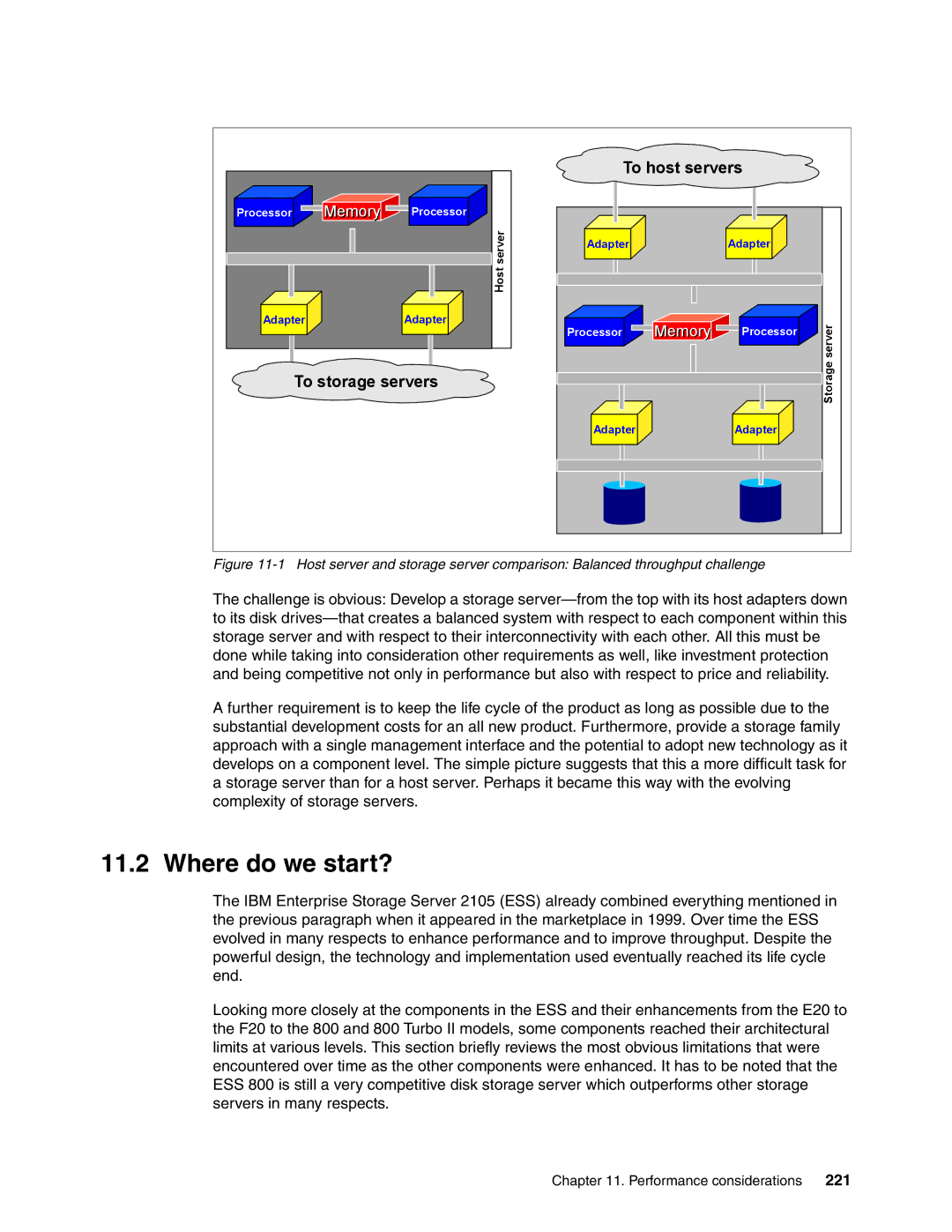
|
|
| To host servers |
| ||
Processor | Memory | Processor |
|
|
|
|
|
| server | Adapter |
| Adapter |
|
|
|
|
|
|
| |
|
| Host |
|
|
|
|
Adapter | Adapter | Processor | Memory | Processor | server | |
|
|
| ||||
|
|
|
|
|
| |
| To storage servers |
|
|
| Storage | |
|
|
|
|
|
| |
|
|
| Adapter |
| Adapter |
|
Figure 11-1 Host server and storage server comparison: Balanced throughput challenge
The challenge is obvious: Develop a storage
A further requirement is to keep the life cycle of the product as long as possible due to the substantial development costs for an all new product. Furthermore, provide a storage family approach with a single management interface and the potential to adopt new technology as it develops on a component level. The simple picture suggests that this a more difficult task for a storage server than for a host server. Perhaps it became this way with the evolving complexity of storage servers.
11.2 Where do we start?
The IBM Enterprise Storage Server 2105 (ESS) already combined everything mentioned in the previous paragraph when it appeared in the marketplace in 1999. Over time the ESS evolved in many respects to enhance performance and to improve throughput. Despite the powerful design, the technology and implementation used eventually reached its life cycle end.
Looking more closely at the components in the ESS and their enhancements from the E20 to the F20 to the 800 and 800 Turbo II models, some components reached their architectural limits at various levels. This section briefly reviews the most obvious limitations that were encountered over time as the other components were enhanced. It has to be noted that the ESS 800 is still a very competitive disk storage server which outperforms other storage servers in many respects.
Chapter 11. Performance considerations | 221 |
